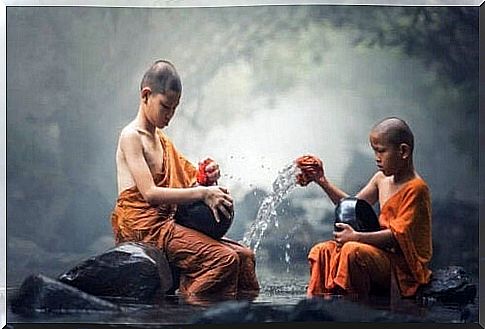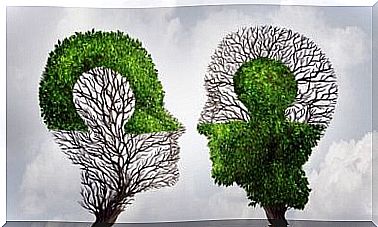Do You Know What Cultural Evolution Is?

We all know the concept of evolution. It probably makes you think of Charles Darwin and his book On the Origin of Species . His idea was that the biological development has taken place with the help of a natural selection. The result is that the species that are most adapted for survival are those that evolve. But it is not the only type of evolution that exists. There is also something we can call cultural evolution.
Humans are the only species we know of that have cultures. It’s one of the things that makes us special. We create culture and pass it on, but what is this really? Culture is defined as the development of:
- traditions
- habits
- religions
- values
- social organizations
- technology
- laws
- language
- artifacts
- tool
- transport system.
It arises by us collecting and passing on knowledge for better adaptation to our environment. Basically, cultural evolution means a long-term transformation of the cultural aspects of a society. Of course, this type of development also changes individuals.

Cultural adaptation
At some point, culture became a survival strategy. It helped us to pass on our knowledge and skills, which enabled us to develop more advanced technology. Along these lines, there are two basic skills required for cultural evolution. These two skills are social learning and empathy.
Some animals may seem to have cultural traditions, but they do not develop and improve over time. The reason is that they lack empathy and social learning. Unlike animals, human societies gradually evolve through cultural adaptation, piece by piece.
When people imitate each other, they develop techniques and modify them while retaining their knowledge and skills. What emerges from these processes is a very varied and complex culture.

Empathy and social learning
The ability to empathize is the ability to attribute thoughts and intentions to other people. All people have it, and we develop it when we are about 6 years old. Empathy is what gives us the understanding that other people also think, which also means that they have intentions. This is what makes it possible for us to have common beliefs and to develop a common culture.
As human beings, we also pass on our culture. When you talk to someone about your religion and show them its sacred rituals, you transfer your culture to them. We use social learning to imitate people and learn from what we see.
An interesting observation from Carl Sagan is how crabs in Japan usually have the same shape as a samurai helmet. This is because for generations the Japanese have refrained from fishing for crabs with this form. The culture revered samurai to such an extent that they left the crabs with just that shape in peace. Over time, this has led to social learning in humans causing another species to form.
Theories of cultural evolution
Many theories that attempt to predict cultural evolution use a classification created by Karl Marx. The classification divides the different aspects of the culture into two parts: base and superstructure. Each aspect of the culture is classified according to one of these two levels.
The base consists of the most material aspects. This is where you find things like technology, means of production and natural resources or people that society uses in its social and economic areas.
It is difficult to predict changes in the base. They usually come from technological progress, economic development and changing economic conditions. Changes in the second level also affect a culture’s base.

The base also has to do with social tasks and functions. This is a level in hierarchical power structures. It is also about the rules that regulate our relationships with each other. Any changes at this level have a major impact on the superstructure and vice versa.
When, for example, a huge number of Western women entered the labor force after the Second World War, this led to a changed base, which affected our social relations.
The superstructure encompasses all the intangible, idealistic aspects of a culture. There are many examples of this, such as things like religious belief, moral values and “high culture”, which include painting, architecture, music, literature and film.
Mandatory changes from the superstructure usually take place to justify the dominant social order. For example, the increase in women in the labor force was associated with an increased social position for women who then received their own disposable income.

An example of cultural evolution
According to these theories, cultures adapt. More specifically, cultures try to adapt to the environment they are in. Marvin Harris has a theory about this called cultural materialism.
He believes that changes in a culture’s base, especially its means of production and technology, lead to new cultural aspects that change its superstructure. But that does not mean that the two levels lose their mutual connection. Any changes to one level affect the other, although there may be a delay.
One cultural change that we can look at through a lens of cultural evolution is cannibalism. This cultural practice came into being in some societies as a kind of by-product of war. But as nations and empires have evolved, this has expanded the goal of warfare to be more than just getting rid of the enemy.
Prisoners of war could help expand a nation, which led to cannibalism losing its usefulness. There was no need to continue to engage in it. Thus the base was changed (the transition from tribe to nation) which changed the superstructure. Thus, culture lost the practice of cannibalism.









